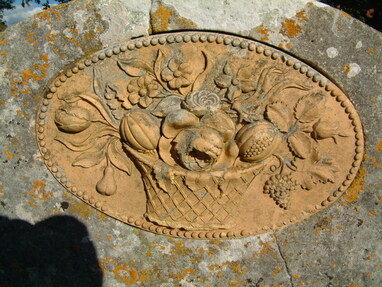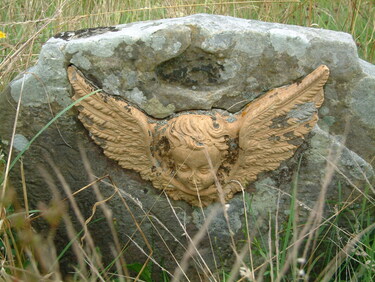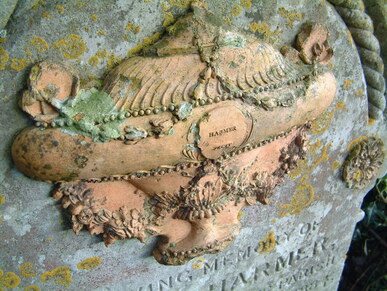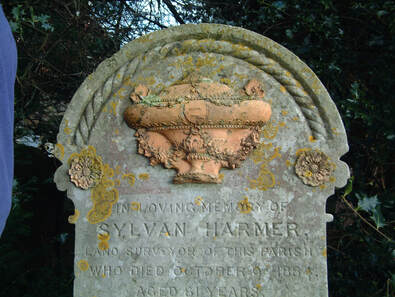|
This week’s #52 Ancestors theme is Tombstones and I thought I would write more about Jonathan Harmer (1762-1849) who I mentioned last week and his terracotta grave decorations. Jonathan's father (Jonathan Harmer 1723 - 1800) was a Stonemason living at Portland Square, Heathfield, Sussex and on his death in 1800 he bequeathed to his two sons 'all such Portland and other stone, together with my working tools and utensils belonging to the trade of stone mason, brick layer and land surveying books.' Jonathan who had emigrated to America in 1796 returned to Heathfield and took over the family business which he ran until 1839 when it was taken over by his sons. In the difficult times of the 19th century, those living locally who were poor could only afford a simple headstone and Jonathan, taking pity on these people came up with the idea of ornamental bas-relief terracotta memorial plaques from the local red clay from Heathfield Park, sometimes combined with paler imported clay. These plaques were affixed to the gravestone and many have lasted for 200 years and you can still see them in a number of Sussex graveyards. To keep costs down he made his own clay moulds and could therefore turn out many identical panels rather than each being carved individually. He devised a method where he cut the outline of the terracotta into the stone, then cut about 3/4 inch deeper into the stone creating a cavity. The terracotta plaque of the same or slightly thicker depth was made, then the plaque was glued into the cavity using a mortar. There are different designs varying from baskets of fruit and flowers, cherubs, urns of flowers and angels. They were fashioned in the same way as the marble stones he carved. Customers could also choose their own designs and some individual designs still remain alongside the more usual ones in graveyards around the locality.
Churchyards where his work can still be seen: Hailsham, Cade Street, Mayfield, Framfield, Brightling, Burwash, Warbleton, Herstmonceux and Salehurst. Other Plaques can be seen at the Brighton Museum and the Anne of Cleeves House Museum in Lewes. Although it is reputed that Jonathan's method died with him in 1849, his son, Sylvan has been said to have carried on the manufacturing of the terracottas after Jonathan's death although in the 1851, 1871 and 1881 census records he is recorded as being a Land Surveyor. I have been unable so far to find any records of any of Jonathan's grandsons taking over the business, however, Sylvan's gravestone dated 1884 at Old Heathfield Churchyard is the latest terracotta I have found, therefore someone must have carried on the tradition for a little while at least.
0 Comments
Leave a Reply. |
AuthorKerry Baldwin Archives
June 2023
Categories |
|
Copyright Kerry Baldwin 2024
|
Proudly powered by Weebly
|




 RSS Feed
RSS Feed
